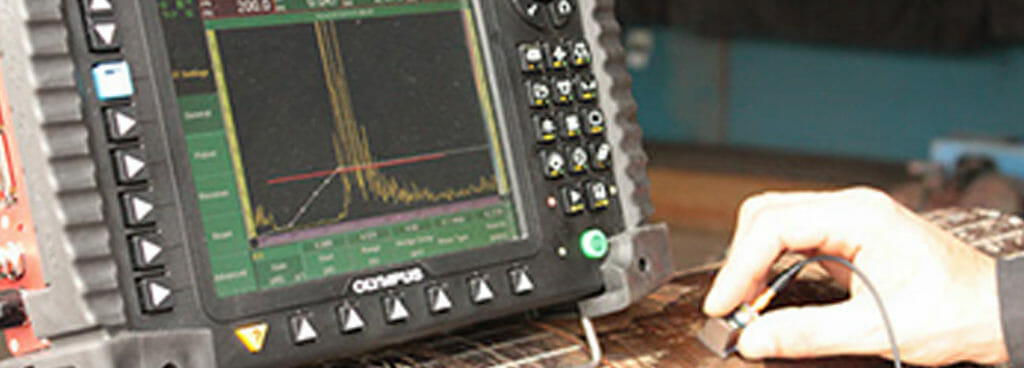Ingenious Techniques to Fillet Weld Inspection and Testing: Enhancing Weld Quality and Compliance Criteria
In the world of welding, the quality and integrity of fillet welds play a crucial role in guaranteeing the structural sturdiness and integrity of different commercial components. With the constant drive for improved performance and compliance with strict requirements, the expedition of innovative strategies to fillet weld examination and testing has actually become vital.
Advanced Non-Destructive Screening Techniques
Using state-of-the-art technologies, advanced non-destructive testing techniques play a critical role in ensuring the integrity and top quality of fillet welds. These techniques, such as phased array ultrasonic screening (PAUT) and magnetic particle screening (MPT), offer detailed understandings into the weld's internal framework without triggering any type of damages to the material. PAUT, for circumstances, uses several ultrasonic components to examine the weld from various angles, supplying a comprehensive visualization of prospective flaws like lack of blend or splits.
In A Similar Way, MPT is effective in discovering surface-breaking defects by applying a magnetic field and iron particles to the weld area. This technique is especially helpful for identifying gaps that might jeopardize the weld's strength. By utilizing these sophisticated non-destructive testing techniques, weld examiners can properly evaluate the high quality of fillet welds, guaranteeing conformity with industry requirements and laws. The ability to detect defects early on not just improves weld top quality but also protects against costly rework or failings in architectural honesty, underlining the relevance of these ingenious screening techniques in welding examinations.
Robotics and Automation in Inspection
The assimilation of robotics and automation has actually changed the examination process for fillet welds, boosting performance and accuracy in high quality analysis. Robotics provide precise control and repeatability in checking welds, making certain trustworthy and consistent results. Automated systems can be configured to follow certain examination courses, guaranteeing complete coverage of welds and lowering the danger of human mistake.
Robotic inspection systems equipped with advanced sensors can identify and gauge weld features with high precision, offering detailed data for analysis. These systems can determine issues such as fractures, absence of fusion, and porosity, allowing timely restorative activities to be taken. Additionally, robotics and automation enable real-time information collection and evaluation, giving instant responses to drivers and promoting quick decision-making processes.
Furthermore, making use of robotics and automation in fillet weld assessment improves overall efficiency by lowering inspection times and increasing evaluation throughput. By improving the assessment process, makers can make certain weld top quality and conformity standards are satisfied efficiently, inevitably leading to set you back savings and boosted item quality.
Using Expert System for Analysis
Artificial knowledge plays an essential function in enhancing the effectiveness and accuracy of analysis in fillet weld inspection processes. By harnessing the power of AI, assessors can improve the analysis of weld top quality and compliance requirements, causing much more accurate and reliable results. AI formulas can quickly refine substantial amounts of information from weld examinations, identifying defects or incongruities that may be challenging to relate to the nude eye. This sophisticated technology makes it possible for real-time surveillance of weld high quality, allowing for immediate rehabilitative activities to be taken if any kind of problems are detected.
In addition, AI systems can pick up from past examination information, continually boosting their capability to recognize potential problems and discrepancies in fillet welds. This flexible learning capability boosts the overall high quality control process, lowering the chance of human error and ensuring that welds satisfy the required criteria. By integrating expert system right into fillet weld evaluation, industries can accomplish greater degrees of effectiveness, uniformity, and conformity in their assessment techniques.
Portable Equipment for On-Site Assessment
 Enhancing area assessment effectiveness, the fostering of portable devices transforms on-site analysis procedures for fillet welds. These tools offer adaptability and convenience, permitting inspectors to perform thorough evaluations in various places, including remote or difficult atmospheres. Portable devices such as ultrasonic screening tools, magnetic particle examination equipment, and electronic radiography systems offer real-time information and high-resolution imaging capabilities, making it possible for fast decision-making and instant comments on weld high quality.
Enhancing area assessment effectiveness, the fostering of portable devices transforms on-site analysis procedures for fillet welds. These tools offer adaptability and convenience, permitting inspectors to perform thorough evaluations in various places, including remote or difficult atmospheres. Portable devices such as ultrasonic screening tools, magnetic particle examination equipment, and electronic radiography systems offer real-time information and high-resolution imaging capabilities, making it possible for fast decision-making and instant comments on weld high quality.One substantial benefit of portable tools is their capacity to enhance assessment treatments, decreasing downtime and improving overall performance. Assessors can easily deliver these tools to various task sites, removing the requirement for transferring heavy equipment or parts to off-site centers. Furthermore, the portability of these tools advertises cost-effectiveness by reducing transport expenses and increasing inspection timelines.
Moreover, the use of portable devices for on-site assessment promotes aggressive quality assurance actions, as assessors can immediately identify and resolve any kind of prospective welding defects or disparities. By integrating these ingenious innovations into on-site evaluation techniques, welding experts can make certain compliance with industry requirements and boost weld high quality, eventually bring about improved structural integrity and safety and security in different welding applications.
Assimilation of Data Management Systems
Having optimized on-site inspection processes with the use of mobile tools, the next stage includes the seamless integration of information administration systems to further enhance effectiveness and information evaluation capabilities in fillet weld examination and screening. Welding Inspection Racine. By integrating additional info information monitoring systems into the inspection process, organizations can simplify data collection, storage, and evaluation. This combination enables real-time monitoring of weld quality, instant recognition of problems, and punctual decision-making to fix any issues that might occur throughout the evaluation process
The assimilation of data administration systems enables seamless communication between various stakeholders involved in the inspection procedure, fostering collaboration and enhancing general quality control measures. Eventually, the combination official website of data monitoring systems serves to boost the requirements of fillet weld examination and screening, making certain compliance with sector policies and improving weld top quality.
Conclusion
To conclude, ingenious methods to fillet weld evaluation and screening have considerably boosted weld high quality and conformity requirements. Advanced non-destructive testing techniques, robotics, automation, fabricated intelligence, mobile devices, and information administration systems have actually changed the means weld inspections are carried out. By using these innovations, sectors can ensure that welds satisfy the required top quality standards and policies, inevitably enhancing overall efficiency and safety and security in welding procedures.

By employing these sophisticated non-destructive screening methods, weld assessors can precisely assess the quality of fillet welds, ensuring compliance with industry criteria and guidelines. Mobile tools such as ultrasonic screening devices, magnetic fragment evaluation tools, and electronic radiography systems supply real-time information and high-resolution imaging abilities, allowing quick decision-making and instant comments on weld high quality.
Having optimized on-site inspection processes via the usage of portable tools, the next website here phase entails the seamless integration of data monitoring systems to further enhance efficiency and data evaluation capabilities in fillet weld assessment and testing (Welding Inspection Racine). Eventually, the integration of data monitoring systems serves to boost the criteria of fillet weld assessment and testing, making sure compliance with industry policies and boosting weld high quality
 In final thought, ingenious methods to fillet weld inspection and screening have actually significantly boosted weld high quality and compliance requirements.
In final thought, ingenious methods to fillet weld inspection and screening have actually significantly boosted weld high quality and compliance requirements.